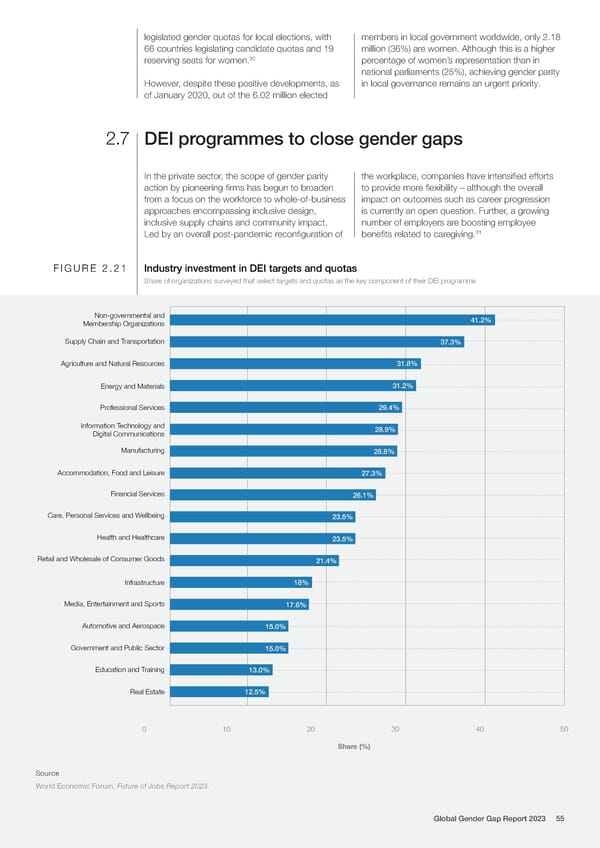legislated gender quotas for local elections, with members in local government worldwide, only 2.18 66 countries legislating candidate quotas and 19 million (36%) are women. Although this is a higher reserving seats for women.30 percentage of women’s representation than in national parliaments (25%), achieving gender parity However, despite these positive developments, as in local governance remains an urgent priority. of January 2020, out of the 6.02 million elected 2.7 DEI programmes to close gender gaps In the private sector, the scope of gender parity the workplace, companies have intensi昀椀ed efforts action by pioneering 昀椀rms has begun to broaden to provide more 昀氀exibility – although the overall from a focus on the workforce to whole-of-business impact on outcomes such as career progression approaches encompassing inclusive design, is currently an open question. Further, a growing inclusive supply chains and community impact. number of employers are boosting employee Led by an overall post-pandemic recon昀椀guration of bene昀椀ts related to caregiving.31 FIGURE 2.21 Industry investment in DEI targets and quotas Share of organizations surveyed that select targets and quotas as the key component of their DEI programme Non-governmental and 41.2% Membership Organizations Supply Chain and Transportation 37.3% Agriculture and Natural Resources 31.8% Energy and Materials 31.2% Professional Services 29.4% Information Technology and 28.9% Digital Communications Manufacturing 28.8% Accommodation, Food and Leisure 27.3% Financial Services 26.1% Care, Personal Services and Wellbeing 23.5% Health and Healthcare 23.5% Retail and Wholesale of Consumer Goods 21.4% Infrastructure 18% Media, Entertainment and Sports 17.6% Automotive and Aerospace 15.0% Government and Public Sector 15.0% Education and Training 13.0% Real Estate 12.5% 0 10 20 30 40 50 Share (%) Source World Economic Forum, Future of Jobs Report 2023. Global Gender Gap Report 2023 55
 Global Gender Gap Report 2023 Page 54 Page 56
Global Gender Gap Report 2023 Page 54 Page 56